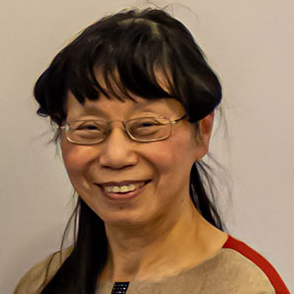State-of-the-Art Polymer Science and Technology in the UK (2021,2022)
A special issue of Polymers (ISSN 2073-4360).
Deadline for manuscript submissions: closed (30 June 2023) | Viewed by 4098
Special Issue Editors
Interests: advanced biomaterials; especially hydrogel; drug delivery; additive manufacturing and 3D bioprinting
Special Issues, Collections and Topics in MDPI journals
Interests: biomaterials; biopolymers; tissue engineering; hydrogels
Special Issues, Collections and Topics in MDPI journals
Interests: micro-/nano-fabrication; biomaterial interface science; nano-bio-interactions; designer biomaterials; tissue engineering; neural engineering
Special Issue Information
Dear Colleagues,
Polymers and their composites have recently received significant applications in energy, electronics, healthcare, and manufacturing technologies. However, the constant development of new polymer materials is essential to support and expand the growing interest in those advanced applications. Polymer chemistry and processing is one of the active, fast-growing, and multidisciplinary research areas in the United Kingdom. Academic scientists, funding agencies, and industries in the UK have demonstrated a strong commitment to promoting the scientific and technological advancements of polymer materials through conducting world-class research and providing financial supports for research and developments.
This Special Issue aims to highlight and promote recent advances in polymer science and technology in the UK through publishing original research and review papers. Topics of particular interest include, but are not limited to:
- Polymer synthesis and characterizations
- Polymer processing
- Biopolymers/biomaterials
- Functional polymeric devices
- Modeling and simulations of polymers and processes
Dr. Pooya Davoodi
Prof. Dr. Ying Yang
Dr. Paul Roach
Guest Editor
Manuscript Submission Information
Manuscripts should be submitted online at www.mdpi.com by registering and logging in to this website. Once you are registered, click here to go to the submission form. Manuscripts can be submitted until the deadline. All submissions that pass pre-check are peer-reviewed. Accepted papers will be published continuously in the journal (as soon as accepted) and will be listed together on the special issue website. Research articles, review articles as well as short communications are invited. For planned papers, a title and short abstract (about 100 words) can be sent to the Editorial Office for announcement on this website.
Submitted manuscripts should not have been published previously, nor be under consideration for publication elsewhere (except conference proceedings papers). All manuscripts are thoroughly refereed through a single-blind peer-review process. A guide for authors and other relevant information for submission of manuscripts is available on the Instructions for Authors page. Polymers is an international peer-reviewed open access semimonthly journal published by MDPI.
Please visit the Instructions for Authors page before submitting a manuscript. The Article Processing Charge (APC) for publication in this open access journal is 2700 CHF (Swiss Francs). Submitted papers should be well formatted and use good English. Authors may use MDPI's English editing service prior to publication or during author revisions.
Keywords
- polymer synthesis
- polymeric biomaterials
- smart polymers
- polymer nanocomposites
- polymeric membranes
- polymers in medical applications
- functional polymers
- elastomers and rubbers
- polymer processing and engineering
- polymers in 3D printing/3D bioprinting/additive manufacturing
- polymers in electronics
- polymers in energy
- colloid and molecular assembly
- modelling and simulations of polymers and processes








